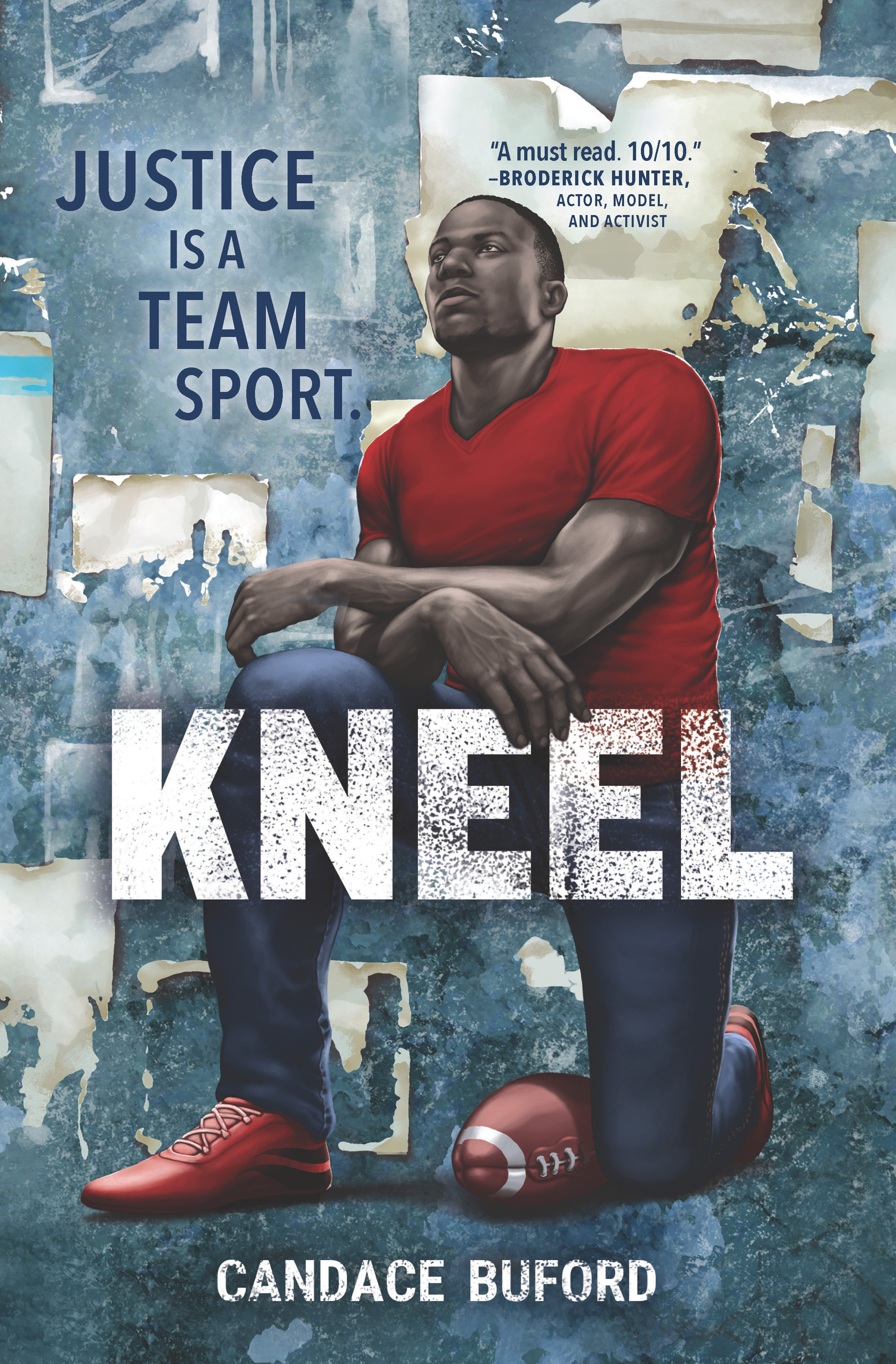This Book Hails the Courage of High School Athletes Who Take a Knee

When Candace Buford first started following NFL quarterback Colin Kaepernick’s silent protest during the national anthem in 2016 and the ripple effect his decision to take a knee had, she began to wonder about the high schoolers across the country who were inspired to speak out against police brutality and other injustices.
“I wanted to dig into the protests, and I wanted to make a statement from my corner of the world,” Buford, who grew up in Texas and spent a lot of time in Louisiana, said. “Young adults are ready to have that conversation and are ready to listen, but I didn’t necessarily see a lot of adults ready to do that.”
Buford’s new novel, Kneel, which was released in September by Inkyard Press, follows teen football players Russell and Marion, who are star athletes in their small Louisiana town. Their lives are changed forever when a fight breaks out during a game against a wealthier, mostly white school, and Marion is unjustly blamed and could face jail time. As Russell learns how to speak up against the unfairness of the system, he finds himself increasingly drawn to his classmate Gabby, whose own activism begins to heavily influence his journey.
We had the chance to talk to Buford about her novel, how real-life events influenced this book, and how all teens can learn to find their voice.
As we see with Russell and Gabby, publicly protesting as a teen is often much scarier because high schoolers could lose access to things like college scholarships and recommendations. What was it like exploring that aspect of this story?
When Colin Kaepernick took a knee, that changed the trajectory of his career. It’s no different for these high school athletes. In Kneel, these particular kids are trying to get a D-1 scholarship because that’s the only way that they can get out of their small town. I really just think that the stakes couldn’t be higher.
Even when Black teens and other teens of color are clearly victims of injustice, they are often blamed for what happens to them and how they choose to react. We see that happen with Marion in this story. How did you dive into creating that character?
I went to law school, and when you read criminal justice cases and study the criminal justice system all of the time, you realize that you can get charged with so many things. And then if you are charged, your life is on pause because you can be stuck in jail if you can’t make bond.
We see that it’s not only Marion’s life that’s on the line here. It’s Rus’s [too] because his scholarship is dependent on how well the team does, and the rest of the team is in jeopardy too. So in this particular instance, there are a lot of raised stakes. And this is all because of something Marion should not even have been arrested for.
One of the most interesting characters in Kneel is Gabby, a teen girl activist and Russell’s love interest. While Gabby is incredibly poised and passionate about her cause, activism also takes a lot out of her, especially because she doesn’t want to deal with the spotlight. What was your favorite part about creating Gabby?
With Gabby, I really wanted it to present another form of protest. Not everybody can take a knee, and not everybody is in a position where they feel like they can bring all of that attention to themselves. We meet Gabby at the beginning of the book when Rus is trying to compliment her on her intersectional feminist report. She’s very tapped into that and really into social movements and equity. It’s just another aspect of how you can use your voice.
I modeled Gabby after several people that I knew in high school who just had such a fire and passion. They’d write guerrilla poetry and, after school, would bring chalk with them and write social justice poems in the breezeway. They felt that you didn’t need to see their faces just to read their messages. That was the inspiration behind Gabby.
What is your advice for teens who want to speak out against the injustices they see around them?
I will say I wasn’t necessarily one of those teens who was super vocal. I kind of was like Marion, who thought ‘violence is violence and silence is safety.’ I wanted to go to college; I wanted that scholarship. I’ve thought a lot about that — how I conducted myself and how I conducted my activism in high school. I wish I felt more comfortable using my voice. I think the more people who feel comfortable using their voices in whatever way — whether it’s small, medium, or large ways — I think that will move the needle farther towards progress.
This interview has been lightly edited for length and clarity.
More articles by Category: Arts and culture
More articles by Tag: Books



























